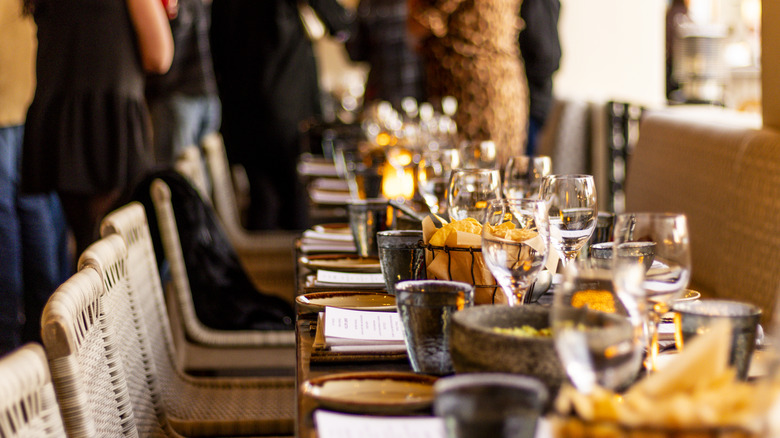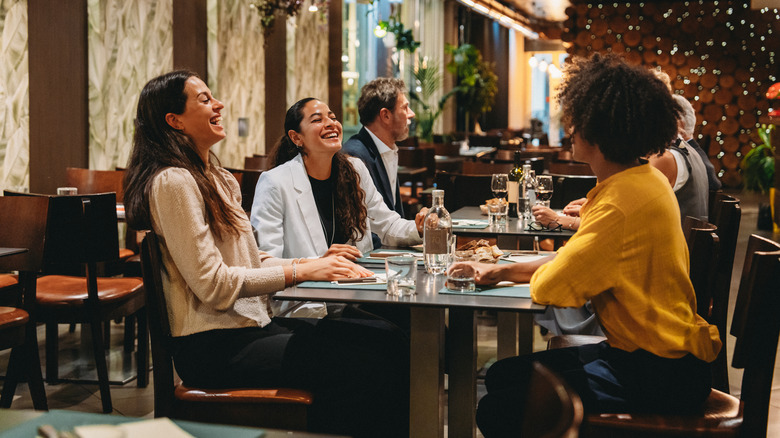The Seating Mistake You Should Avoid At Restaurants
It's always a good idea to treat yourself to dining out once in a while. It's a great way to socialize or catch up with friends, and an excellent opportunity to try new cuisines. While usually an enjoyable experience, there's plenty of dining etiquette rules that are commonly broken, alongside certain factors like seating mistakes which can quickly sour a pleasant outing. To learn more, Food Republic spoke with Salar Sheik, restaurant and hospitality consultant.
"One of the most common mistakes diners make is not considering the noise level and flow of traffic in the dining room," Sheik revealed. "For example, sitting near the bar or patio usually means more movement, chatter, and energy — which can be great for a lively night out, but not ideal for a quiet conversation." It's also a smart idea to politely request your seating preferences to the host. If there's loud music playing, you can ask to be seated away from any speakers, which are usually well-hidden in the dining room. You should also ask to avoid high-traffic areas like the doors to the kitchen, which will have constant flow or waiters bringing in and out food, or the dreaded toilet table. According to Sheik, "Choosing a booth or an interior table often provides a more relaxed and intimate experience."
If you are looking for a relaxed and casual experience, you can also consider dining out on less busy days, swapping the weekends for Tuesday — which was also the day of the week Anthony Bourdain recommended to eat out. You could also try going at non-peak hours, such as enjoying lunch after 2 p.m., or a post-9 p.m. dinner in true Spanish-style.
Other seating mistakes to avoid
Where and how you sit in a restaurant can send unconcious messages. According to Salar Sheik, "When guests are positioned in a way that blocks service pathways or faces away from the rest of their group, it can create an unintended barrier." Spatial awareness and orientation are key to maintaining connection and comfort. In China, the principles of Feng Shui — how energy flows throughout a space — can often influence restaurant designs by emphasizing U-shaped pathways for smooth movement, an equal number of seats for balance, and a layout that allows guests to see the entrance and dining area, which are believed to positively impact diner's mood. This spatial principle can be also applied to seating arrangements: "A table that feels closed off or positioned awkwardly may signal that the guests prefer more privacy, while open seating arrangements encourage warmth, attentiveness, and genuine connection from the staff," Sheik explained.
There are also dining etiquette rules involving seating. "The host should always invite their guests to be seated first — it's a small gesture, but one that shows respect and attentiveness," Sheik told us. "The host typically takes the seat that allows the best view of the room, which also makes it easier to interact with both guests and staff." While this is a good rule of follow in the United States, it's not universal. In the same way England has unique dining etiquette rules, other countries differ in seating etiquette. Take Japan, where the most honored guest sits furthest from the entrance, while in Saudi Arabia the most honored guest sits in the middle of the table.


